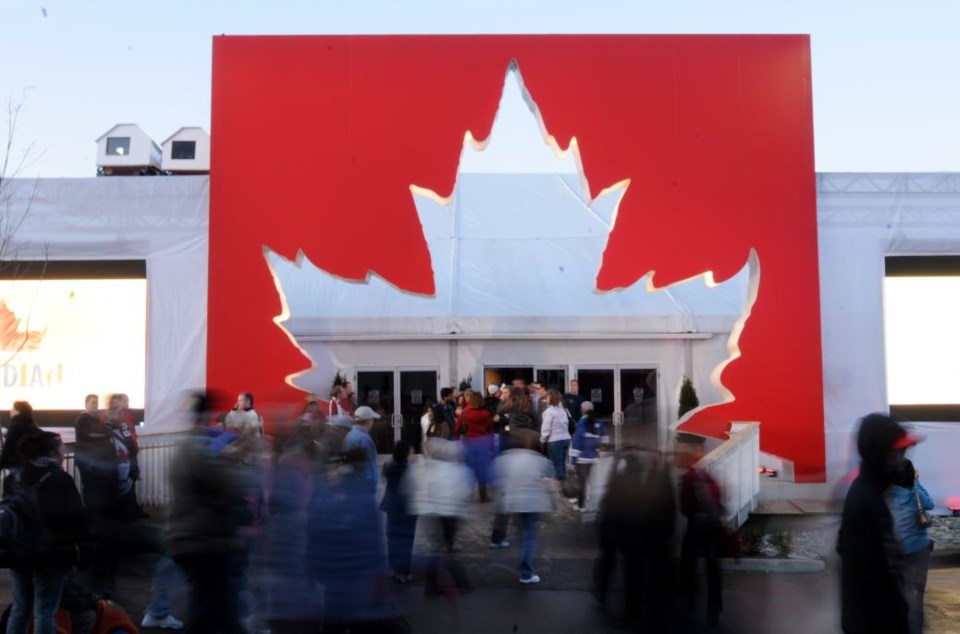More than 40 years after its first attempt, the resort of Whistler finally achieved what it had initially set out to do: host a Winter Olympic Games.
The International Olympic Committee approved the Vancouver-Whistler bid in 2003, and on Feb. 12, 2010, the world's most impressive athletic stage came to British Columbia.
Though the fanfare is long gone and the roar of the crowd has died down, the traces left behind by the Olympic and Paralympic Games are still evident in several ways that were long planned.
"We started to write the story of what the world would think of us post-Games. We started the talk of what it would be like now, and then we tried to build a Games that would make us feel 10 years on, 20 years on, that we had done a good thing," says �鶹��ýӳ��Organizing Committee (VANOC) CEO John Furlong.
However, there were other side effects that sprouted organically — and even tragically.
Here, Pique looks back at the Olympic effect not just on Whistler and its people, but the province, the nation, and the Olympic movement as a whole.
The athletes
It's no surprise that Whistler has produced more than its fair share of alpine athletes, but the Whistler Sliding Centre's construction allowed for the resort to produce a more diverse set of high-achieving athletes.
It wasn't always easy for those pursuing the new-to-Whistler sliding sports. For luger Reid Watts, declaring his sport of choice resulted in more than a few double takes from his friends' parents.
"'How do you let your son do this?'" he recalls his own parents being asked.
Watts started luging shortly after the track opened, so he was already well on his way when the Olympians showed up in February 2010. Still, seeing the world's best at home lit a fire in him, and just eight years later, at age 19, he rocketed to a 12th-place finish at the PyeongChang Games alongside 2010 athletes Sam Edney, Alex Gough and the doubles team of Tristan Walker and Justin Snith.
"It was a magical time, for sure. I definitely remember really fondly watching all the sliding. I'd been sliding for a year prior to the Games just when the track was opened," he says.
"Watching that, I knew that's where I was destined to be and that's where I had to go, where I wanted to go. Without watching the Olympics at home, I'm sure a lot of that flame wouldn't have shined as bright as it did."
Similarly, a mere eight years after watching Olympic alpine athletes carve Creekside in the new Dave Murray National Training Centre, essentially her own backyard, Mollie Jepsen lined up in the start gate at the Paralympic Winter Games in South Korea.
Just 18, Jepsen went on to win four medals, including gold in the super combined.
Before taking in the Whistler Games, however, Jepsen says she was pursuing gymnastics more avidly. With spring break moved that year to overlap with the Games, Jepsen and her family posted up at their Creekside vacation home, and despite not entirely understanding the significance of the Olympics, she was quickly caught up in the magic of the Winter Games, watching fellow Whistler Mountain Ski Club (WMSC) representatives such as Britt Janyk compete.
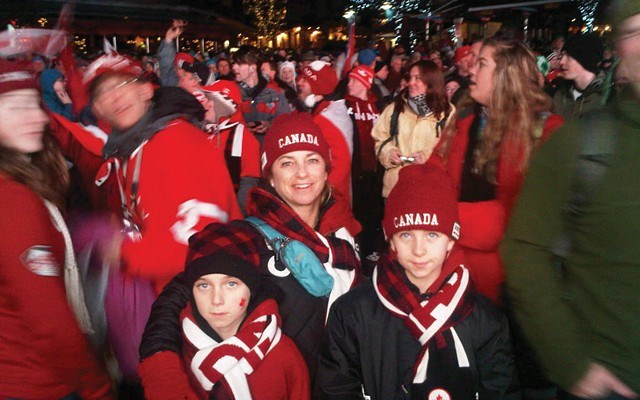
"My entire life had been shaped by a few moments at the Games, knowing that that is what I wanted to do," she says. "I always wonder if things would have been different if the Games hadn't been in �鶹��ýӳ��because I wouldn't have had that exposure to those athletes and that energy.
"Looking at it now, I was so happy that I got involved in skiing and because of the Games, I found this love for the sport that I wasn't necessarily considering being competitive in at the time."
Being on the world stage herself, Jepsen rekindles the electricity of 2010 each time out.
"It's hard to describe that feeling. It's the same feeling I have now, too, competing at these bigger races, and the same feeling I had at the Games — the want to win, to want to do it," she says.
The clubs
There's no doubt that local sporting clubs have enjoyed the upgrades the Games provided.
For WMSC executive director Mark Tilston, the most significant legacy is the Dave Murray National Training Centre. The site provides a training and race venue for the athletes.
"It's significant in the development of our athletes and going on and making new Olympians," he says. "The important thing for me is, 'How do we get a legacy out of it that continues to feed the Olympic movement?'"
Before the centre was constructed, Tilston says the club's skiers trekked all over Whistler to find the best possible descents. It's nice, he explains, to have a home.
"There were training slopes, but they moved around the mountain a lot, so now that we've got a dedicated training centre, we've got the equipment all stored up at the top," he says.
Looking at the club's numbers, Tilston notes there was a registration boost shortly after the Games. Though the rise was only temporary, the added presence left its mark, as the influx in membership fees allowed the club to improve its infrastructure.
And, in terms of WMSC presence on the national level, it's no surprise that high achievers such as Stefanie and Katie Fleckenstein, Brodie and Riley Seger, Cameron and Kyle Alexander, Jack Crawford, Broderick Thompson and Asher Jordan were in the sweet spot of their early teenage years at the time of the Olympics, at an age where they could dream big while developing the ability to back it up.
Tilston, the husband of 2010 Olympian Britt Janyk, adds that the Games brought out the best in Whistler's volunteer culture, including the legendary Weasel Workers.
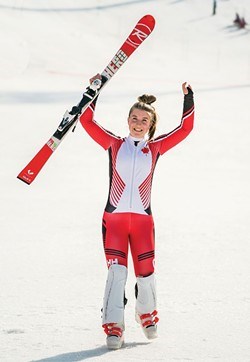
"The big thing about the Olympics is it does literally take thousands of people to make it happen and that volunteer culture that the Olympics created has again facilitated smoother events for the 10 years since," he says.
That amplified sense of volunteerism helped set the stage for other major events, according to Mo Douglas, the �鶹��ýӳ��Olympic Committee (VANOC) director of communications and current head of Arts Whistler. Wrangling 2,500 volunteers for Subaru Ironman Canada, which debuted in Whistler in 2011, would have been much more difficult were it not for the latent Olympic spirit.
"We already had a pretty strong culture of volunteerism in Whistler because there already was a number of big festivals," she says. "But the magnitude, it's 25,000 people and 10,000 in the corridor, many of whom were recruited from the corridor because accommodation was a challenge.”
She later adds: "I think it brought volunteerism into people's hearts in a much more important way than we've seen in a long time."
Back in the Callaghan, meanwhile, the newly developed Whistler Olympic Park proved to be a boon for local Nordic clubs.
Whistler Nordics president Tony Peiffer notes that before the site opened in 2008, the only option for local skiers was the Lost Lake Trails.
Like WMSC, Whistler Nordics saw a bump in numbers after the Games. While the count eventually waned, those who stuck with the sport have a beautiful park in which to hone their craft.
"We saw some absolutely flourishing years after the Olympics up to 2013 or '14," he says. "The Games are a big part of it. For one, we have a legacy that's second to none. You go skiing out there today, it's absolutely first class. We have a training facility that's first class that kids all get to use."
Another parallel to the alpine club is that several local Nordic skiers are making their mark internationally. Peiffer's daughter, Benita, and Michael Murdoch are set to attend the Junior World Championships in Germany later this month, while a third club member, Joe Davies, was named as an alternate.
"The Olympics played a part in solidifying, in my mind, their joy of sport. That's all you're really giving your kid is the joy of sport," says Peiffer, whose cousin, Arnd, represented Germany in biathlon in 2010.
As well, Whistler Sport Legacies launched the Whistler Nordic Development program in 2016. That very first year, Bobby Kreitz qualified for the International Biathlon Union Youth/Junior World Championships, while five members attended this year's event.
Because of Callaghan Gold stored snow helping athletes start the season early and glacier skiing extending the season into summer, they can realistically ski from October to July.
"They're competitive, which is awesome, which is a legacy that, without something like Whistler Olympic Park, we would never have," Peiffer says.
The venues
On a physical level, the local venues most easily associated with the Games are the two then-brand-new sites that hosted competition: the Whistler Sliding Centre and Whistler Olympic Park, both managed by Whistler Sport Legacies (WSL).
Despite concern the sliding centre in particular could become a white elephant (the Cesana Pariol site used for the 2006 Turin Games was ordered dismantled in 2012, for example), the track has managed to reinvent itself and find ways to make its cash flow work, whether it's sending guests down the track in a bobsled or hosting a wedding at its Blackcomb Mountain site.
WSL president and CEO Roger Soane explains that being situated in Whistler is a major factor in the track's success, with a fresh selection of new tourists streaming through the site every year — even if it's just a small portion of the resort's overall tourism base.
"As much as we've been very successful, in the winter, we only put down maybe 6,000 people on that track. As a percentage of the visitors that are coming to Whistler, it's still relatively small," he says. "Hopefully, for many, many years, we will have that same percentage of people that will want to come and experience this Olympic ride.
"If we were putting down 50,000 or 100,000 people a year, I would start to think, 'OK, where are we going to get our new audience from?' But every year, we have new people coming."
With the sliding centre a short car, gondola or bus ride away from Whistler Village, it's easily accessible for visitors to town. The same can't be said for the other venue under WSL's purview, Whistler Olympic Park in the Callaghan Valley.
Though the park has attracted events ranging from Tough Mudder and the Red Bull 400 (even hosting its World Championships last July), Soane acknowledges that its bread and butter will always be the locals.
"It is a different issue because it is so far removed from the village, and we know that visitation to Whistler doesn't always relate to visitation to Whistler Olympic Park," he says. "We're looking at a different audience and rather than it being a bucket-list thing, it's a lifestyle thing for people.
"You drive to Whistler Olympic Park and you're on the edge of the wilderness, which gives you a completely different experience to being in Whistler Village."
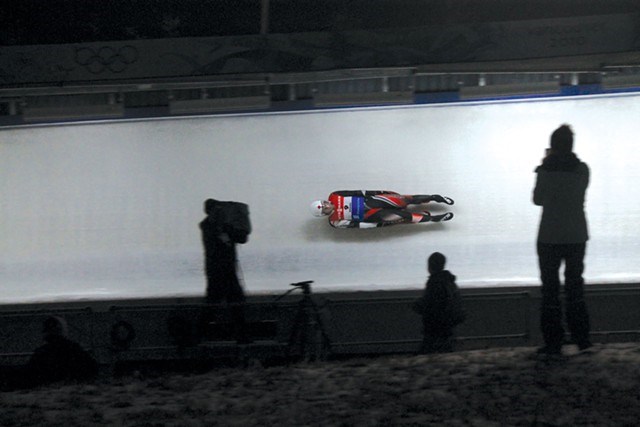
Early forethought allowed WSL some leeway in finding their post-Olympics footing because of the Games Operating Trust (GOT), which, after an initial $110-million endowment from the provincial and federal governments, grew to $133.6 million by 2007. The Whistler venues received 40 per cent ($53.44-million), as did the Richmond Olympic Oval, while the remaining 20 per cent was placed in a contingency fund.
"We were smart enough at the time to leave money behind to protect the facilities and make sure they were always there," Furlong says. "It's always a challenge for a community to continue to promote itself and to continue to look for events. It's brought people to the community, and these people are world class, every one of them. It's a terrific asset to have and it's obviously important to maintain them and look after them, and I think the society is doing a very good job."
In its most recent report, Whistler's portion of the Games Operating Trust sat at $52.803 million while the overall total was $137.427 million.
Soane credited officials for recognizing a legacy fund was necessary to keep the venues "vibrant and useable," while the organization's tax-free status with the Resort Municipality of Whistler has also helped.
"There were a lot of people who felt that the Whistler legacies would be a drain on the community and on the taxpayer. I'm happy to say that that's not the case. As sporting venues, we know that they are very capital intensive and very operationally intensive," Soane says. "I'm proud that we have not had to go back to the government. We have not had to go to the municipality. We have great partnerships with them."
As well, Whistler Olympic Plaza became the first satellite site for medal presentations and later became the largest green space in Whistler Village, hosting tent-pole events ranging from Subaru Ironman Canada, the RBC GranFondo Whistler, Rogers Hometown Hockey and the B.C. Bike Race, as well as the Whistler Presents concert series and the Whistler Village Beer Festival.
The infra-structure
Hosting the Games kept builders busy away from the venue site as well.
The community of Cheakamus Crossing sprung up as the Athletes' Village, complete with the Whistler Athletes' Centre, as well as 154 townhomes and 67 condo units for resident housing, and a 55-unit apartment block managed by the Whistler Housing Authority. Currently situated on 37 hectares of the overall 136-hectare land grant from the provincial government, further development of Cheakamus Crossing is eyed as a way to maintain the resort's goal of housing 75 per cent of its workers.
Then-mayor Ken Melamed, who served in the role from 2005 to 2011 and was a councillor for nine years prior, says building the new neighbourhood was arguably the largest project ever undertaken by the Resort Municipality of Whistler.
"It's a fantastic neighbourhood — diverse, built on Smart Growth principles using green-building practices," he says. "Our desire was not just to provide resident-restricted housing but also to increase the stock of affordable housing, so the youth hostel going from 25 or 30 beds, really hard to get to on the west side of Alta Lake to over 100 beds, serviced by transit, I think was a huge asset for the community."
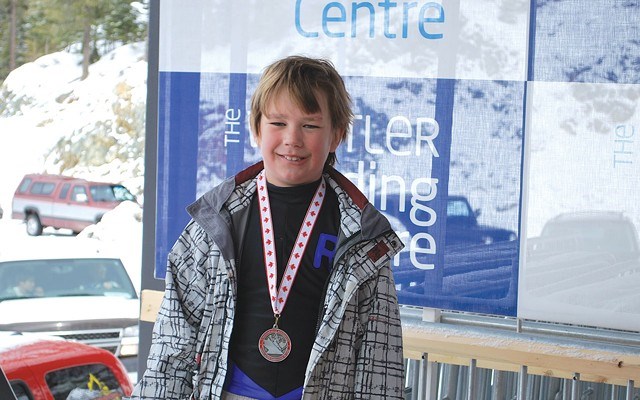
Melamed, who approached the mayor's role with an environmentally conscious perspective, oversaw the installation of the District Energy System into the neighbourhood's homes. Though touted as a greener and cheaper heating alternative, as it extracts energy from treated wastewater, system users faced technical problems and expensive repair bills. Late last year, the RMOW settled with Cheakamus residents, offering homeowners $5,000 apiece if at least 75 per cent of each respective strata agreed and waived the municipality of future liability. That amount is just over a third of the initial installation cost.
For his part, Melamed was sorry for how the system was handled, noting that the RMOW approached the University of British Columbia's environmental economics department as well as an engineering firm to study the proposed system and neither found issues, in theory.
"What nobody bothered to tell us back there was that it was so new that within the industry, there wasn't the technical expertise to actually build and deliver the system," he says. "It seems like an obvious question now, but it wasn't obvious then.
"We didn't choose a conventional system, so there were cost overruns and breakdowns and it's still a problem for some," he adds.
The other major infrastructure upgrade was the $600-million Highway 99 between �鶹��ýӳ��and Whistler, though Melamed downplays the effect the easier-to-drive roadway had on the resort, noting the portion from Squamish south saw the bulk of the work and it was that community that saw most of the benefits.
Melamed also adds that the roadwork would have been done, Olympics or not, though the Games certainly accelerated the timeline.
The Games also proved to help all of British Columbia's 14 resort municipalities with the introduction of the Resort Municipality Initiative (RMI). As one of the only times a single local government has the ear of higher levels, the RMOW insisted on the program, which is collected as the municipal and regional district tax. Whistler received $7.5 million in RMI funds last year and has taken in $93 million in the program's lifespan. Local projects that have received RMI funding include the Whistler Presents concert series, Gateway Loop, village way finding upgrades, the Alpine Trails Network, Cultural Connector and Village shuttle.
The pain & tragedy
The opening of the 2010 Winter Olympic Games was set to be one of the best days of Besso Gotsadze's life.
As a volunteer with the Georgian delegation, Gotsadze sported his blue jacket, eagerly representing his homeland in his adopted country of Canada.
But one call changed everything.
On Feb. 12, 2010, Gotsadze was informed that there had been an accident at the Whistler Sliding Centre involving luger Nodar Kumaritashvili, one member of the eight-athlete contingent representing Georgia at the Games. Gotsadze remembered being summoned to an information desk where he was informed of the news. A mix of emotions overcame him.
"I will always remember this look. It was like sadness, something, I don't know, but I found out something happened," he recalls. "I went to the hospital and there is blood, blood, blood.
"The one thing that was keeping me up was knowing that I have to be strong because there were young people and other people. I had to keep them up, supporting them."
At the opening ceremony, which went on as planned later in the day, Gotsadze received nothing but warmth from the Canadians he encountered.
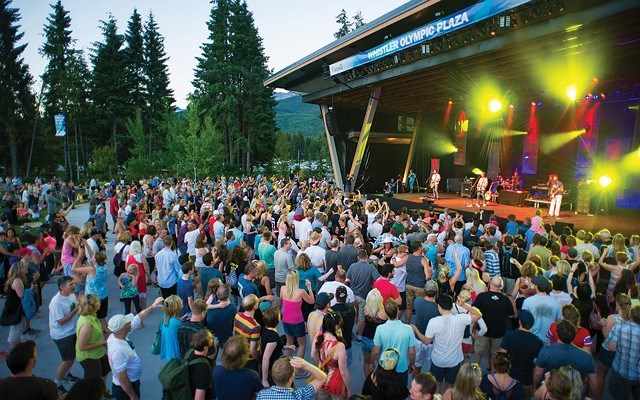
Gotsadze, who came to Canada in 2006 and applied to volunteer with the Georgian delegation the following year, said being accepted for the position was one of his happiest moments. He came to know Kumaritashvili through his work with the delegation and remembers him fondly.
On the 10th anniversary of Kumaritashvili's death, a small group of Georgians, including Georgian ambassador to Canada Konstantin Kavtaradze, went up to the Whistler Sliding Centre with a Georgian priest to hold a short ceremony at the crash site.
Afterwards, the group joined a march through the village organized by post-traumatic stress disorder (PTSD) advocate and first responder Terrance Kosikar, who attended to Kumaritashvili after the crash.
"For us to be able to march through the village with some drumming, some good vibes and everybody waving their flags, dinging their cowbells, bringing out their red mittens and blue suits, and walk in honour of the athletes, ultimately, the goal is to do this walk, say prayer, and pay our respects," Kosikar says in the days before the memorial. "We will do this every single year until they bury me, and we will honour the legacy of Nodar Kumaritashvili."
With an eye on accentuating any positive side effects of Kumaritashvili's death, Gotsadze and the Georgian community also plan to support Kosikar at an event in �鶹��ýӳ��during PTSD Awareness Month in June. On June 6, Kosikar will hold Tire'd of the Stigma at Jack Poole Plaza from 10 a.m. to 6 p.m. in support of Camp My Way, a program Kosikar founded designed to help first responders with PTSD and their families. The event will wrap up Kosikar's 30-day effort of flipping a 400-pound (181-kg) tractor tire up Brandywine Glacier.
Kosikar has been in contact with the Kumaritashvili family and hopes they can attend the event in June.
For more information, visit��.
The Four Host First Nations
An acknowledgement can go a long way, according to Squamish Nation Councillor Kwitelut (Carla George).
For starters, acknowledging one's presence on Indigenous traditional territory is one sign of improved relationships between First Nations and other governments, with subsequent development of the Truth and Reconciliation Committee and Missing and Murdered Indigenous Women and Girls inquiry also positive outcomes, according to Kwitelut.
"Previous to the Olympics, it didn't feel that we were in that place of being able to have that opportunity to acknowledge or engage at the level that we're at now," she says. "To me, it's really changed the outlook between First Nations and governments and municipalities."
Kwitelut was elected to the Squamish Nation council in 2005, and worked with the Nation in the lead-up to the Games. She saw several of the developments firsthand, including the formation of the Four Host First Nations, which teamed Squamish with the Lil'wat, Tsleil-Waututh and Musqueam to give rise to Indigenous voices in the Games planning, a first for the Olympics.
"Having the ear of the government at the highest level was definitely a lot different from where we were," she says. "Various colleagues were able to call upon the premier and have that kind of dialogue.
"We didn't have to kick the doors down. They were opening up and there was collaboration."
In Whistler, the Nation teamed up with the Lil'wat to build the Squamish-Lil'wat Cultural Centre (SLCC) in advance of the Games, as well as to sign the landmark Master Development Agreement (MDA) with Whistler Blackcomb in 2017.
"[The MDA has] opened up many doors for an opportunity for youth to participate, work on the mountain and ski or board on the mountain," she says.
As well, the newly founded Aboriginal Youth Sport Legacy Fund helped the First Nations Snowboard Team get off the ground in 2004. The program now boasts hundreds of members from more than a dozen nations from British Columbia to Nova Scotia.
Kwitelut also highlights the SLCC's Indigenous Youth Ambassador program, a 16-week immersive cultural and business program for Indigenous youth, for producing, among others, one of Kwitelut's council colleagues as well as a professor at Simon Fraser University teaching Skwxwútszan7mesh Snichim, the Nation's traditional language, one example of a greater respect and acknowledgement of the Nation's culture in education.
As well, the Squamish Nation began flexing its construction-industry muscle in advance of the Olympics as Newhaven Projects Limited Partnership, a joint venture between the Nation and Newhaven Construction Group, which worked on Whistler Olympic Park and the SLCC. The Squamish Nation also teamed up with Musqeam and Tsleil-Waututh to form the MST Development Corporation, which currently oversees six properties consisting of nearly 65 hectares of prime land in Metro �鶹��ýӳ��valued at more than $1 billion.
While Kwitelut focused on the positives from the Games, saying she could not think of any negative aspects herself, she acknowledges there is a long way to go for reconciliation between the First Nations and the rest of the country.
"There's still a lot of work to be done, yes, but I feel that things are starting to shift," she says. "We need to acknowledge the things that have occurred, the atrocities that have occurred, to our people, through being removed from their homes, sent to residential schools. How can we rectify the wrongs that have occurred to our families and to our community?"
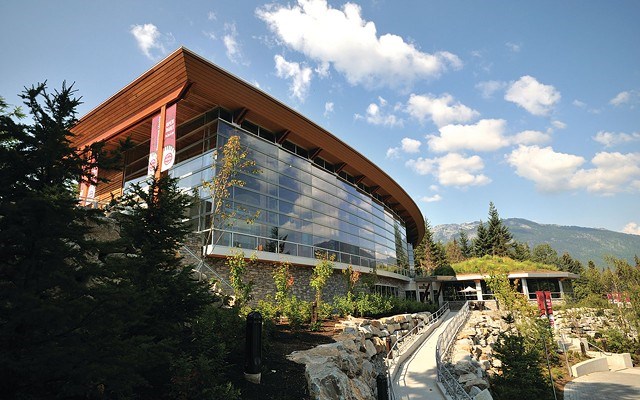
It's especially stark given the recent protests in support of Wet'suwet'en hereditary chiefs, who are standing against the Coastal GasLink pipeline in northern B.C.
Interview requests sent to Lil'wat Nation were not returned.
Douglas, in her current role at Arts Whistler, also recalls an Olympic connection, highlighting the organization staging the world premiere of utszan, a one-woman play by Yvonne Wallace in which she speaks both English and Ucwalmicwts, the traditional language of the Lil'wat. Douglas recalls that colleagues she met during the Games helped bring the partnership to fruition.
The greater Olympic movement
With its environmental credentials, including publishing five sustainability update reports along the way, Indigenous inclusion and, at US$7 billion, a relative bargain compared to the US$51-billion price tag for the Sochi Games just four years later, the 2010 Games seemed to be a turning point for the International Olympic Committee and the Olympic movement.
However, despite London's Summer Games in 2012 keeping some focus on sustainability, subsequent Olympics have left Douglas with the opinion that 2010 marked the "last truly great Games."
Of particular concern to Douglas was the Russian government passing legislation making it illegal to support pro-gay views in 2013. She flew to Sochi to meet with IOC representatives and, later in 2014, the IOC recommended that "non-discrimination on sexual orientation" be included in the sixth Fundamental Principle of Olympism.
"Right on the heels of us, we had the Russian Games, that started out for us with a lot of hope on a different kind of Russia, and the Russia we have in front of us in the world of sport is what exists now," she says. "We went from being the first Games to have a Pride House and expand beyond ethnic diversity to social diversity of LGBTQ [people], which has always been a challenge in sport."
As well, widespread Russian doping at the Games led to 11 of its athletes being banned for life and clean Russian athletes competing under the neutral "Olympic Athletes from Russia" banner in 2018.
"If you look back in recent history, �鶹��ýӳ��in 2010 was one of the better ones from a social-legacy perspective," says Dr. Angela Schneider, the director of the International Centre for Olympic Studies at the University of Western Ontario. "The Sochi question and what happened there—questions around doping, questions around WADA—that didn't touch Vancouver."
Though the Olympic movement within Canada seemed to take a hit with Calgary residents rejecting a bid for the 2026 Winter Olympics in a referendum last year, Schneider feels that it had little to do with the 2010 Games, noting the immense infrastructural and financial obligations of the Games as greater concerns.
"There was a negative reaction with Calgary, and Calgary also hosted the Olympics before that. I don't know for sure how we can draw a causal relationship, particularly, from �鶹��ýӳ��to Calgary on that," she says. "People are a little more leery right now until they see a clear movement away from [the excess], but I think we have been seeing that."
Indeed, the IOC has allowed bids that propose reusing past Olympic venues, with Calgary considering tabbing Whistler Olympic Park to host ski jumping and Nordic combined as part of its bid.
Sustainability has become key beyond the Olympics, according to Ann Duffy, who served as VANOC's chief sustainability officer from 2006 to 2011, a role she described as seeking to "create social benefits for enterprises in the communities that don't typically benefit from mega events like the Olympics." Now based in Whistler with her own company, the Ann Duffy Group, she explains that in working with the successful United 2026 North American bid for the FIFA World Cup, the effects on the host cities came to the fore.
With hosts spread across Canada, the United States and Mexico, the World Cup will have a significantly larger footprint, so developing a climate action plan will be key, Duffy says.
"If you don't think about community and environmental impacts in the host region, you don't get support for the bid," she says. "There's the recognition that if we want to have future cities and regions put their hands up to host the Games or a FIFA World Cup, it needs to have better attention and appreciation for the region after the event is gone."
Other areas of focus for Duffy while with the World Cup bid include promoting ethical conduct, human rights and avoiding corruption, including match fixing.
"It's still not perfect but it is much better than it was certainly when I was working at the Olympics," she says. "When we know better, we can do better."
University of Waterloo economics professor Corey van de Waal explains that while initiatives such as reusing venues will make it more appealing for some cities to throw their names in the ring, a truly stringent focus on sustainability will turn some off.
"[A]ny additional IOC requirements will make the process more cumbersome for host cities. In fact, this new focus will almost certainly dissuade some potential host cities from undertaking the application/bidding process," he writes in an email.
"The IOC mandate for sustainable practices highlights the organization's desire to be seen as taking a leadership role in terms of responsible governance. Whether they wish to be or not, sports organizations and sportspersons are often key influencers of the broader social conscience.
"Some things are worth the extra effort."
Whistler, British Columbia, Canada and, indeed, certain corners of the world are all still feeling the effects of the 2010 Winter Olympic Games here in our resort. With so many of the lasting legacies still in operation, it will be fascinating to see what transpires in the years to come.
��
